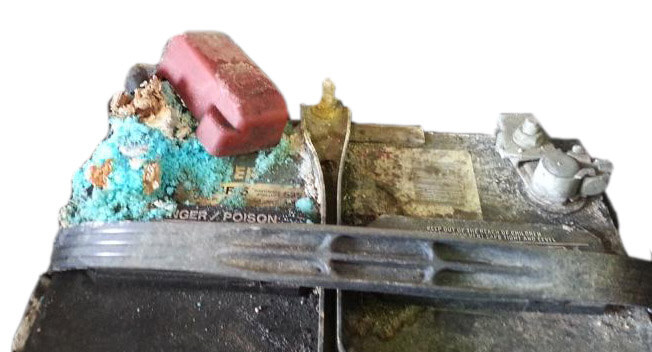When should you replace a car battery?
Pay attention to these car battery warning signs
Here are the 5 signs you should replace a car battery
#1 Your car battery is 4 years old or older
If you’ve reached the 4 year mark on your curent battery, I strongly recommend replacing it now or at least getting it tested before it fails. Batteries in late model cars typically fail in the 3-4 year age range. Why don’t they last as long as older batteries that could go for 6-7 years? Two reasons: More electrical accessories and electrical demand and heat
More electrical accessories put more demand on the battery and charging system
The cars of the 60’s didn’t come with power windows, rear window defoggers, and AC was optional. They didn’t have heated seats or heated mirrors. They didn’t have electric fuel pumps and multiple computers. All those electrical accessories put a huge drain on the battery. If you drive short distances in stop-and-go-traffic with those accessories on, you’re pulling more power out of the battery than the alternator can replace. That leaves the battery in a constant state of discharge and that causes battery sulfation, a killer of lead acid batteries.
Trying to squeeze the last bit of life out of a battery can cause it to fail with no notice. In other words, you have no typical battery failure symptoms. It works fine when you shut it off at night and the next morning it’s dead. This type of battery failure is usually caused by plate shedding that cause a short circuit.
Heat is the #1 killer of car batteries
You may thing that cold weather is what kills batteries. Wrong. They may choose to fail in cold weather, but they were actually damaged by high underhood temperatures. Why? Because lead acid batteries produce power through a chemical interaction with the plate material. The chemical reaction accelerates in high heat and slows in cold.
As engine compartments have gotten more congested, battery life has taken a hit. In fact, many batteries come from the factory with a battery blanket insulator installed. That insulator isn’t there to keep it warm in winter. It’s there to insulate the battery from engine heat.
High underhood heat is why some car makers have started relocating batteries to other places in the vehicle, like in the fender, under the back seat, and in the trunk.
#2 Excessive corrosion on the battery terminals is a symptom of a failing battery
Battery terminal corrosion is caused by two things;
a leak between the plastic case and the battery posts, a battery that’s sulfation due to being in a slightly discharged state for long periods.
If you clean the corrosion off your battery and it quickly returns, you have a leak and the battery should be replaced. It you clean it and it doesn’t return quickly, you’re good-to-go.
#3 Slow cranking can be a sign of a bad car battery
If a battery can’t produce the proper voltage and amperage, it can show up as slow cranking. It can also be a sign of a failed or failing charging system, so you should check the charging system first (See How to test an alternator). If the charging system passes, and you’ve cleaned all the battery connections and ground connections, it’s the battery.
An old or sulfated battery simply can’t produce the required number of amps to start your engine. There are some chargers with a “recondition” cycle, but that only works if your batter is only slightly sulfated (See What causes battery sulfation).
#4 Windows roll slowly or headlights dim at a stop
Your battery is supposed to provide the power your car needs if the alternator can’t keep up. That happens most often when you’re stopped at a light because the alternator can only produce about a third of its maximum output as idle speed. And modern cars need a lot of power to keep running (See How many amps does your car need to keep running at idle).
So dimming headlights is a sign that your battery isn’t up to snuff and it’s time to replace your car battery.
#5 Your start/stop system no longer works
Start/stop systems are designed to constantly monitor your battery’s ability to power the car when the engine is off. If there’s any doubt about the battery’s ability to restart your car after a start/stop shutdown, the computer will prevent the engine from shutting down. If you have the start/stop system turned on, but the engine never shuts down, get the battery tested because it’s the most likely cause.
How to test your battery
Battery condition is determined by conducting a voltage and resistance test. A voltage test alone only tells you the battery’s current state of charge and only on that day. It can’t tell you the battery’s overall condition state of health.
Modern battery testers can give you a very accurate report on the condition of your battery. If it fails the test, replace your car battery now even it appears to be working fine; because it won’t be working fine for long.
©, 2023 Rick Muscoplat
Posted on by Rick Muscoplat
